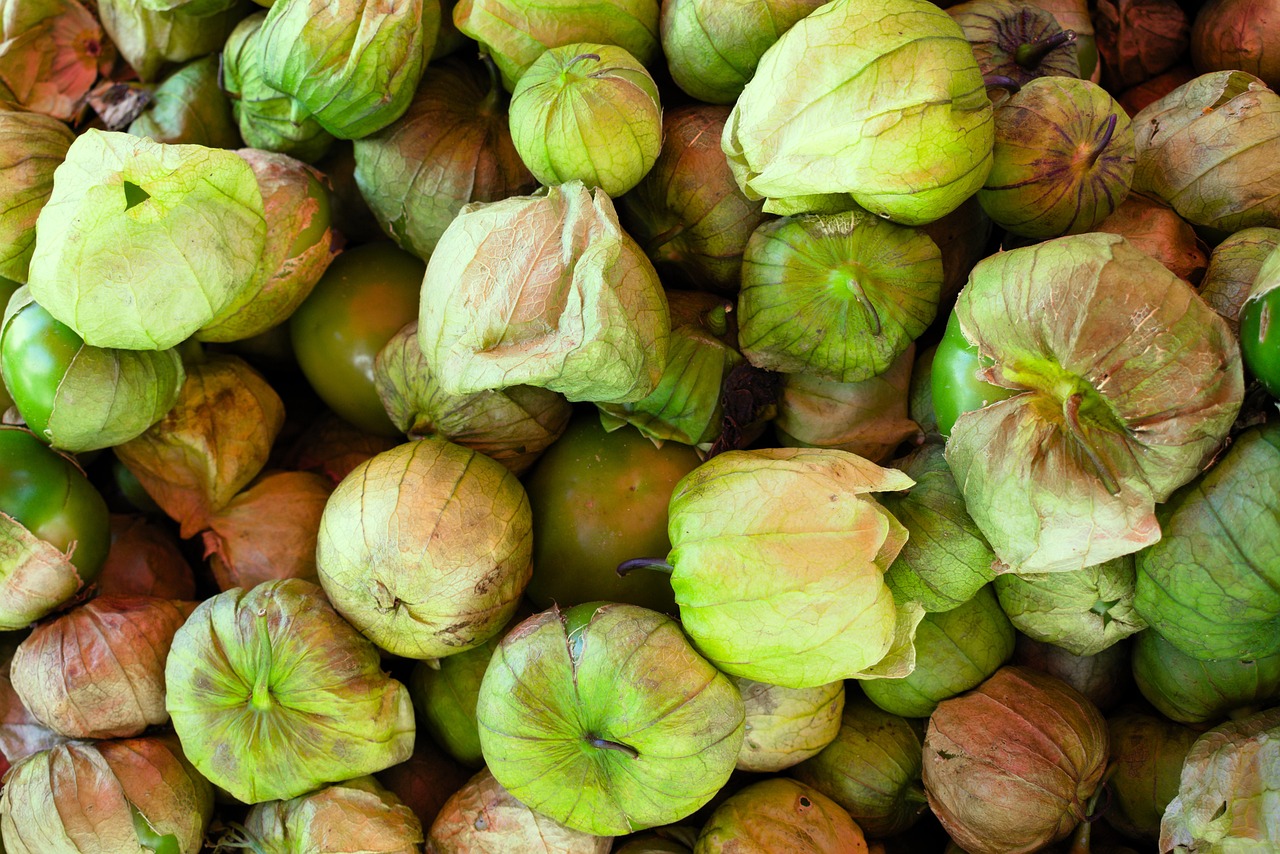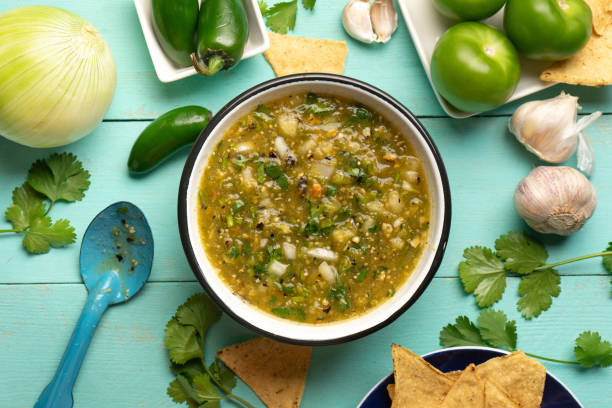Embarking on a culinary journey with tomatillos is like uncovering a hidden gem in the world of flavors. Often overshadowed by their more familiar relative, the tomato, tomatillos possess a unique tartness and vibrant green hue that can transform ordinary dishes into extraordinary culinary creations. In this comprehensive guide titled “How to Cook with Tomatillos?,” we delve deep into the heart of this versatile ingredient, ensuring you wield the expertise to harness its full potential in your kitchen adventures.
Our exploration is not just about acquainting you with tomatillos but mastering the art of cooking with them. From selecting the perfect tomatillos to integrating them into a wide array of dishes, we’ve got you covered. Whether you’re aiming to elevate your salsa verde to new heights, infuse a tangy twist into traditional soups, or venture into uncharted territories with innovative tomatillo-based recipes, this article serves as your all-encompassing manual.
Contents
- 1 The Origin and Cultural Significance of Tomatillos
- 2 Selecting and Storing Tomatillos
- 3 Preparation Techniques
- 4 How To Cook With Tomatillos?
- 5 Preservation Beyond Refrigeration
- 6 Nutritional Benefits and Health Considerations
- 7 Common Cooking Mistakes and How to Avoid Them
- 8 Conclusion: How To Cook With Tomatillos?
The Origin and Cultural Significance of Tomatillos

Tomatillos originated in Mexico and were domesticated by ancient Aztec and Mayan civilizations. The fruit was a staple ingredient in Central American cuisine before Spanish colonization.
The name tomatillo comes from the Spanish word “tomate,” meaning tomato. The “illo” suffix denotes small in size. Tomatillos belong to the same nightshade family as tomatoes but have different culinary uses.
Tomatillos remain an integral part of Mexican and Central American cuisine today. They are featured in many staple dishes like salsa verde, enchilada sauce, pozole, and tamales. Tomatillos also frequently accompany proteins like chicken, pork, and beef.
The tart, fruity flavor of tomatillos balances the richness of meats, chilies, and other ingredients in these cuisines. Tomatillos offer a fresh, palate-cleansing quality to robust dishes.
Selecting and Storing Tomatillos
When selecting tomatillos, choose fruits that are firm and bright green. Avoid any with brown spots. The husk should be intact, as an opened husk indicates spoilage. Larger tomatillos tend to be sweeter, while smaller ones are tarter.
See more : How To Cook On A Blackstone Griddle? Easy Tips for Beginners
Peak tomatillo season is summer through early fall, though they may be available outside this timeframe depending on your region. Mexican and Latin American markets often carry tomatillos year-round.
Store fresh tomatillos in the refrigerator in a paper or mesh bag. Do not remove the husk before storing. Tomatillos will keep for 2-3 weeks in the fridge.
For longer storage, canned or jarred tomatillos are available. Frozen tomatillos are another good option and retain their texture better than canned.
Preparation Techniques
- Cleaning: Give tomatillos a thorough rinse under cool water. Use a paper towel to gently rub off any sticky residue from the husk. The husk and stem should be removed before eating raw or cooking.
- Husking: To remove the papery husk, grasp it near the stem and peel it back, turning the tomatillo as you go. Typically, the husk will come off easily in one piece. Rinse again after husking.
- Chopping/Slicing: The flesh of tomatillos can be firm, so use a sharp knife for clean cuts. For salsa and sauces, chop them into small pieces. For stews or roasts, larger slices work well. Remove the core and seeds only if desired.
- Blanching: Plunging tomatillos into boiling water for 2-3 minutes softens them and mellows their tartness. Blanching brings out their natural sweetness. Shock in an ice bath after boiling to preserve color.
Tomatillos can be used similarly to green tomatoes in many recipes. However, unlike green tomatoes, tomatillos have a tart, fruity taste that pairs especially well with chilies. Their flavor is also less vegetal and acidic than green tomatoes.
How To Cook With Tomatillos?
To cook with tomatillos, you can try various recipes that highlight their vibrant flavor. Here are some tips and recipes to get you started.
Roasting Tomatillos
See more : Does Dark Chocolate Have Caffeine? Surprising Facts
Start by pulling off the husks, rinsing the tomatillos, cutting out the stems, and roasting them in a 400F oven for about 15 minutes until they wrinkle and turn army green in color.
Recipes
- Homemade Salsa Verde : A sharp Salsa Verde is perfect for topping authentic Carnitas. You can make this version in the oven and top your Carnitas with an authentic Salsa Verde using fresh tomatillos.
- Enchiladas Suizas : This dish is a delightful way to enjoy tomatillos in a creamy, cheesy sauce over enchiladas.
- Chicken Burritos with Avocado Salsa Verde : These burritos are enhanced with a flavorful Avocado Salsa Verde made from fresh tomatillos.
- Quesadillas Dipped In Avocado Salsa Verde : Enjoy quesadillas dipped in a delicious Avocado Salsa Verde made with tomatillos.
Other cooking ideas
- Eat them raw : While tomatillos are commonly cooked until tender, they can also be served raw for a different flavor profile.
- Grilled Shrimp Tacos with Tomatillo Salsa : Try making Grilled Shrimp Tacos topped with a zesty Tomatillo Salsa for a refreshing twist.
- Slow Cooker Chili Verde : Prepare a hearty Slow Cooker Chili Verde using tomatillos for a comforting meal.
Preservation Beyond Refrigeration
Tomatillos can be preserved by canning, freezing, or drying:
- Canning: Remove husks and sterilize tomatillos by submerging in boiling water for 2 minutes. Pack in hot sterilized glass jars with hot liquid like water, broth, or salsa. Leave 1⁄2 inch headspace. Process jars in a water bath canner for 15 minutes (add 5 minutes for elevations above 1000 feet).
- Freezing: Husk and rinse tomatillos. Boil for 3 minutes then chill in ice bath. Freeze whole, sliced, chopped, or pureed in freezer-safe bags or containers. Frozen tomatillos will keep for up to one year.
- Drying: Clean and husk tomatillos. Slice in half and scoop out seeds. Arrange in single layer on drying trays. Dehydrate at 125°F until completely dried, about 12 hours. Store dried tomatillos in airtight containers for up to 6 months. Rehydrate before using in recipes.
Nutritional Benefits and Health Considerations

Tomatillos are highly nutritious and deliver many health benefits:
- Excellent source of vitamin C and vitamin K. Also contain iron, magnesium, phosphorus, copper, and potassium.
- High in antioxidants like lutein, zeaxanthin, and quercetin that protect cells from damage and inflammation. May lower risk of chronic diseases.
- Provide niacin, riboflavin, and folate B vitamins. Assist in energy metabolism and nervous system function.
- Contain dietary fiber for improved digestion and gut health. Fiber also helps stabilize blood sugar levels.
- Low in calories and carbohydrates. May support weight management as part of balanced diet. Their tartness can curb sweet cravings.
Tomatillos are generally recognized as safe, but unripe or overripe fruits can cause digestive upset in some people due to higher levels of solanine and other glycoalkaloids.
Common Cooking Mistakes and How to Avoid Them
Avoid these common tomatillo cooking mistakes:
- Not removing the papery husk before eating or cooking. Always peel off the inedible husk first.
- Overcooking and turning tomatillos to mush. Cook briefly to retain texture.
- Using tomatillos as a direct substitute for tomatoes. Adjust recipes to suit their more tart, fruity flavor.
- Not storing properly and letting them over-ripen. Refrigerate promptly and use within 2-3 weeks.
- Underseasoning dishes made with tomatillos. Their tartness may require extra salt, spices, or acidity from lime juice.
- Serving raw tomatillos without balancing their sharp raw flavor. Pair with avocado, onion, cilantro, and/or serrano chiles.
- Canning them improperly and not using a pressure canner. The pH requires pressure canning for safe long-term storage.
Conclusion: How To Cook With Tomatillos?
With their distinct tart and fruity flavor, tomatillos bring a unique taste and versatility to Mexican cuisine. Their zesty, citrusy quality balances and enlivens many dishes. Tomatillos also offer considerable nutritional benefits and environmentally friendly growing habits. No wonder they are a beloved staple in Central American cooking. Whether grown at home or purchased fresh, tomatillos are a delightful ingredient well worth exploring in your kitchen.

Michael J. Fanola is the chef and owner of Joe’s French Italian Inn Restaurants. He has over 30 years of culinary experience, and his restaurants have been voted “Best Italian Restaurant” by the readers of the Staten Island Advance for many years in a row. Michael is a graduate of the prestigious Culinary Institute of America, and he has worked in some of the most highly acclaimed kitchens in the country.








